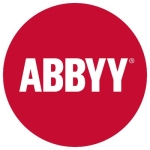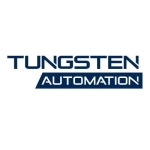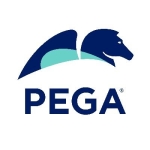Some of our use cases for Automation Anywhere have been embedding automation into our AML process and Anti-money laundering process as well. Also using automation to navigate some of our legacy applications to extract information from the UI.
The challenge we're trying to solve with Automation Anywhere is extracting information from our legacy applications. We do not have exposed endpoints. We have to use Automation Anywhere to be able to navigate and extract information for customers and from data information as well.
The processes and tasks automated by Automation Anywhere are a little bit more detailed. What we've come to figure out is the processes previously were not documented correctly. And Automation Anywhere allows us to get more insight and documentation out of our processes.
One of the immediate opportunities we see to leverage AI within our processes and our operations is customer service. Leveraging the natural language models and human response to be able to generate customer-focused responses is something that we plan to leverage very soon.
Automation Anywhere has improved our organization by allowing our resources to focus on the task at hand that impact our customer, while we use Automation Anywhere to replace some of the redundant work that some of our users and internal team members are facing.
Our company approach to generative AI for Automation Anywhere is more in line with building the future, allowing us to enhance our processes without necessarily embedding our internal team members with redundant tasks, allowing them to focus on the actual deliverables of a business versus generating a response to email or reading email. Allowing them to be a more human-focused team member.
Looking into Automation Anywhere in terms of the relationship with AWS, we manage our servers locally for our VMs and are looking to migrate to AWS. The partnership with AWS will allow us to integrate some of our processes and allow access to some of our DVs. This will be a good improvement for us.
Automation Anywhere is easy to use for people who don't have experience because it is a no-code solution and is user-friendly in terms of being able to generate automation with a plethora of available tasks and variables.
One or two automation walkthroughs of the actual process are required to learn Automation Anywhere. It takes a short amount of time for a user to get acquainted with Automation Anywhere. There are some latencies with being able to expose certain things such as APIs or establish a certain connection, but building automation is short in terms of development.
We have a few tools that are integrated with Automation Anywhere. We use a lot of Microsoft tools. Azure AD is integrated directly with Automation Anywhere and allows us to expand our ability to automate processes. We also have some desktop applications and some proprietary software that we would like to integrate with Automation Anywhere.
Automation Anywhere is a robust platform that allows us to make multiple connections and scale horizontally across the actual environment to give us a more robust integration or automation that allows for downstream impact whether it is internal users or external users of our products. It allows us the ability to go horizontally fast with a lot of multiple integrations of products.
Automation Anywhere has helped us save time and costs, sometimes in the same automation as well as replacing some of the redundant tasks. Some of our users are giving us the ability to scale quicker without adding additional resources. That saves costs. We save hundreds of hours with some automation and two to three hours for others, but the cost impact of being able to do that with automation has saved a ton of costs as well. We have a lot of bots running daily, manipulating and removing the redundancies of those manual tasks. The resource costs saved equal hundreds of thousands of dollars.
The feature we found to be the most valuable is the documentation automation as it allows us to focus on the actual important piece of building automation instead of tracking some of the repugnant documentation that goes along with building automation.
Automation Anywhere's network has room for improvement. Expanding its partnership with a few other vendors. The likelihood of including companies like AWS, Google, and things like that is the exact approach to what I think Automation Anywhere can improve on. It allows business users who participate and are clients of those vendors to a seamless process integration with Automation Anywhere. This allows for an ecosystem that supports a more robust development of automation because we get a broader use case amongst multiple users of the same product.
I have been using Automation Anywhere for four years.
Automation Anywhere allows us the ability to scale across multiple platforms and in different volumes. At a small scale, we don't have to readdress that automation or that bot to be able to scale if configured and built correctly. It is a very scalable approach that we can take in terms of the integration that we have access to. It allows for an open platform to be able to scale.
The technical support is user-friendly. They are responsive and normally respond within 24 hours. They provide us with updates so we are not left in the dark and keep us involved. They make sure to follow up with a call if anything is needed.
We did not use any automation beforehand but we have a partnership with Workato that allows us to leverage more API-driven automation as well. We utilize both due to the actual diversity of Automation Anywhere. It gives us the ability to navigate a UI, a more legacy application whereas Workato gives us the ability to connect APIs. We use both of them in the same automation platform.
It took us a month to deploy. We set up a few runners or virtual machines to be able to do that work with our IT team who configured some of the runners and made sure that we embedded applications that were gonna be useful and practical for the actual automation itself. We then walked through a few test automation and were able to deploy our first automation within a month.
Automation Anywhere pricing and licensing are competitive compared to the other automation vendors. Automation Anywhere gives us a platform to scale quickly without embedding a lot of costs on our end. It is reasonably priced.
We evaluated the landscape of automation and the partners and vendors that offer the service before we chose Automation Anywhere. My positive previous experience with Automation Anywhere helped make the decision a lot easier for us.
Automation Anywhere is easy to use. It is a simple platform to understand. A simple platform to roll out. We don't need a robust education in terms of automation. We can train internally. We can expose other POs or PMs to the actual application and they will be able to give us additional insights of automation that we can improve.
The con is the resources assignment outside of our internal team members. Finding resources who have good experience variant with Automation Anywhere in the States may be a con for us.
I would rate Automation Anywhere nine out of ten. From what I have seen, they are headed in the right direction to get a ten.
We do not currently use Automation Co-Pilot, but we are excited to start using it. We are going to have a session about using Co-Pilot with our internal teams.
Upgrading Automation Anywhere is simple in terms of the control room to be able to do an upgrade or speak to our account executive to get additional licenses or products added to our instance.
Maintenance depends on how we build the automation. We keep in mind the actual process of being able to manage automation as we build it, which will ultimately save us a call for maintenance at the end. Being able to enable notification error handling within the automation helps reduce the actual maintenance requirements for automation.
Not many people are involved in the maintenance of our automation because we embed some of the process owners into the process so they are aware if a bot was to fail. Then we give them corrective actions in terms of exception handling to be able to oversee that bot as well as to reinitiate a bot or add additional variables into the bot to allow the success of that bot. A minimal amount of people are required for bot maintenance.





















